One of the most critical decisions when buying an e-bike is choosing between a hub-drive and a mid-drive motor. But how do you know which one is right for you?
Did you know that the global market for e-bikes is projected to reach $52 billion by 2030? With so many different options in the market, it’s essential to make an informed decision about which type of motor will suit your needs best.
In this post, we will examine the differences between hub-drive and mid-drive e-bike motors, highlighting the advantages and disadvantages of each type. By the end of this article, you will have a better understanding of the factors to consider when making your decision. So, let’s delve into the world of hub-drive and mid-drive motors, and help you find the perfect match for your needs.
What is a Hub-drive System and How Does It Work?
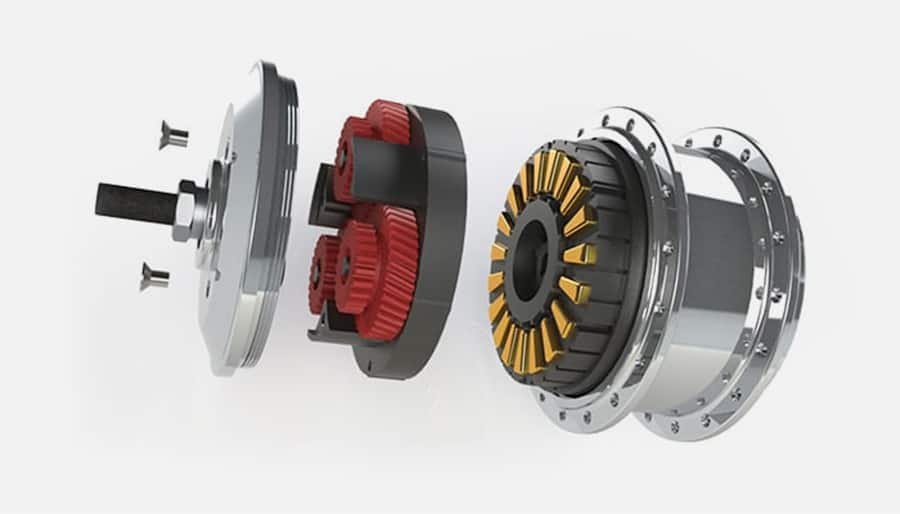
A hub-drive system is an electric drive system that has its motor located in the hub of either the front or rear wheel. It consists of a motor, stator, and rotor, which are housed in a metal casing.
The motor is controlled by an electronic controller that is usually mounted on the frame of the bike. When the rider engages the motor by pedaling or using a throttle, the controller sends a signal to the motor, which in turn spins the wheel.
Types of Hub-drive Systems
There are two main types of hub-drive systems: geared and direct drive.
Geared hub motors have internal gears that increase the torque output, making them better for climbing hills and accelerating from a stop. Direct-drive hub motors have no gears and are generally more efficient at higher speeds, making them better for flat terrain and cruising.
Electric bikes with hub motors are popular among e-bike enthusiasts because they are usually more cost-efficient than mid-drive systems. They also provide a smooth and quiet ride since the motor is located in the hub and there are no visible moving parts.
What is a Mid-drive System and How Does It Work?
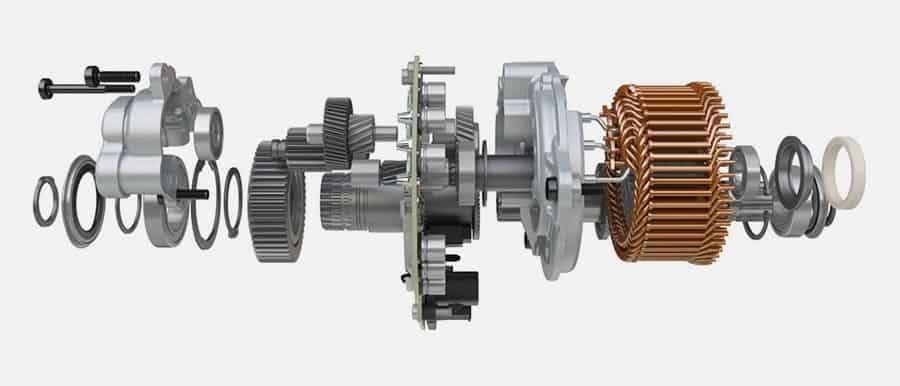
A mid-drive system, also known as a central drive system, is a type of e-bike drive system that is located in the center of the bike frame, usually around the bottom bracket where the pedals attach.
It consists of a motor, chainring, and sensors that detect the rider’s pedaling cadence and force. When the rider engages the motor by pedaling, the controller sends a signal to the motor, which in turn provides assistance to the pedals.
Mid-drive systems are known for their efficiency and ability to climb steep hills. Since the motor is located near the center of the bike, it can take advantage of the bike’s gearing system, allowing the rider to maintain a more consistent pedaling cadence. This results in a more natural and intuitive ride experience.
What’s the Difference Between a Hub Motor and a Mid-drive E-bike?
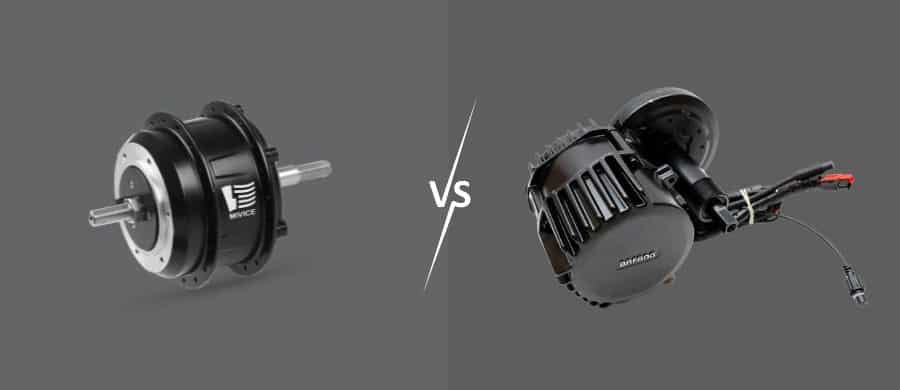
The main difference between a hub motor and a mid-drive e-bike is the location of the motor. Hub motors, as the name suggests, are located in the hub of the wheel, whereas mid-drive motors are located in the center of the bike frame near the pedals.
Hub motors are mostly simpler and easier to install than mid-drive motors, and they provide a smoother and quieter ride. They are also better suited for flat terrain and cruising. However, they are less efficient at climbing steep hills.
On the contrary, Mid-drive motors are more efficient and better suited for climbing steep hills. They also provide a more natural and intuitive ride experience since the motor is integrated with the bike’s gearing system. However, they are more complex and may require more maintenance over time.
Another difference between a hub and a mid-drive e-bike is the type of sensor used to detect the rider’s pedaling. Hub motors typically use a cadence sensor, which measures the speed of pedaling and provides assistance based on the rider’s pedaling speed. Mid-drive motors typically use a torque sensor, which provides assistance based on the force applied to the pedals.
Ultimately, the choice between a hub-motor and mid-drive e-bike depends on the rider’s needs and preferences. Riders who prioritize simplicity and ease of use may prefer a hub-motor e-bike, while riders who prioritize efficiency and climbing ability may prefer a mid-drive e-bike
What Are the Benefits of Hub Motors?
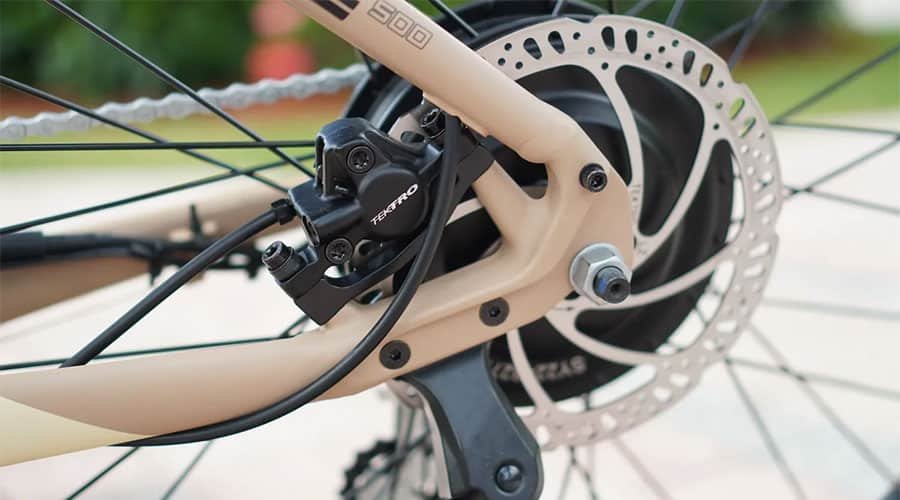
Hub motors offer several benefits that make them a popular choice for e-bike enthusiasts. First, they are not as complex and require less maintenance than mid-drive motors. Additionally, they offer a smooth and quiet ride due to the motor being located in the hub of the wheel, with no other complex moving parts.
Hub motors are also efficient at low speeds and provide strong acceleration, thereby making them well-suited for flat terrain and cruising. In addition, they are also available in both geared and direct-drive versions, providing riders with a range of options to choose from based on their needs and preferences.
Another benefit of hub motors is their ability to provide regenerative braking, which converts the kinetic energy of the bike into electrical energy that can be stored in the battery. This can not only help increase the overall range of the e-bike but also reduce the wear and tear on the brake pads.
Finally, hub motors are available in both front and rear-wheel configurations, providing riders with a range of options to choose from based on their riding style and preferences.
What Are the Disadvantages of a Hub Motor?
While hub motors offer several benefits, there are some cons that riders should keep in mind before making a decision.
One of the main drawbacks of hub motors is their weight, which can make the electric bike more difficult to maneuver by significantly increasing the overall weight of the e-bike. Additionally, hub motors are less efficient at high speeds which can cause a decrease in range and battery life.
Another disadvantage of hub motors is their inability to take advantage of the bike’s gearing system, which can result in a less natural and intuitive ride experience. This can make it more difficult to climb steep hills or maintain a consistent pedaling cadence.
Additionally, when compared to mid-drive motors, hub motors are generally less powerful. This can lead to slower acceleration and lower torque, which can be especially noticeable when riding uphill or in rough terrain.
What Are the Pros of Mid-drive Motors?

Mid-drive motors offer several benefits that make them a popular choice for e-bike enthusiasts. First, they are more efficient than hub motors and can take advantage of the bike’s gearing system, allowing the rider to maintain a more consistent pedaling cadence. This can result in a more natural and intuitive ride experience, especially when climbing steep hills.
Additionally, mid-drive motors are typically more powerful than hub motors and provide more torque, making them better suited for off-road and rough terrain. They are also more efficient at higher speeds, making them a good choice for commuting and long-distance riding.
Mid-drive motors also tend to be more balanced than hub motors since their weight is better distributed, which can result in a more stable and comfortable ride. They are also more customizable and can be adjusted to provide different levels of assistance based on the rider’s needs and preferences.
Finally, mid-drive motors are generally lighter and less bulky than hub motors, making them a good choice for riders who prioritize maneuverability and ease of use. They also tend to be more responsive and can provide more immediate assistance than hub motors.
What Are the Cons of Mid-drive Motors?
While mid-drive motors have many benefits, they also have some drawbacks that should be kept in mind.
One of the main disadvantages of mid-drive motors is their higher cost and complexity compared to hub motors. They also require more maintenance, as they rely on the bike’s chain and derailleur, which can wear down over time and require frequent adjustments.
Another potential disadvantage of mid-drive motors is their noise level. Due to their design and location on the e-bike, they can produce more sound than hub motors which can be a concern for riders who prioritize a quiet ride experience.
Mid-drive motors can also be more complex to maintain and repair. Since they are located at the center of the bike, they can be more difficult to access and require specialized tools and knowledge to repair.
Furthermore, mid-drive motors require that the riders have some knowledge of gear rations and selections, which might be complicated for a beginner rider.
How Long Do Mid-drive E-bike Motors Last?
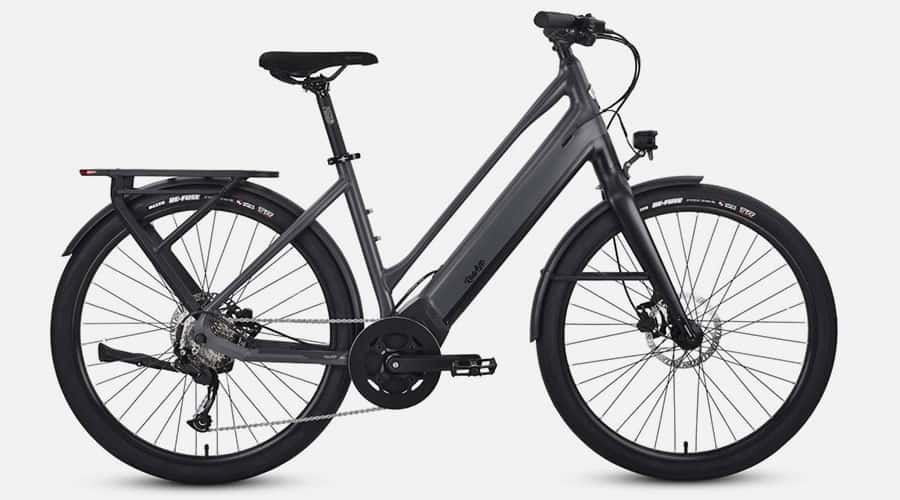
In general, mid-drive motors are designed to be more durable and long-lasting than hub motors due to their higher torque output and more efficient power transfer. A well-maintained mid-drive motor can last for tens of thousands of miles before requiring replacement or major repairs. However, several factors influence the lifespan of a mid-drive e-bike motor.
One factor that can significantly impact how long a mid-drive motor lasts is the type of terrain it is used on. Steep hills, rough trails, and other challenging conditions can put additional stress on the motor and decrease its lifespan. Additionally, excessive heat buildup can cause components to wear out more quickly, so it’s important to avoid prolonged periods of high power output or heavy loads.
Regular maintenance can also help extend the lifespan of a mid-drive motor. By keeping the chain and drivetrain clean and lubricated, you can reduce wear and tear on the motor and other components. Checking and adjusting the bike’s gears can also help ensure that the motor isn’t working harder than it needs to, which can help prolong its life.
Moreover, it is worth noting that the battery on a mid-drive e-bike can also affect the lifespan of the motor. Over time the battery may lose its capacity and require replacement, which can also impact the performance and lifespan of the motor.
How Long Do Electric Hub Motors Last?
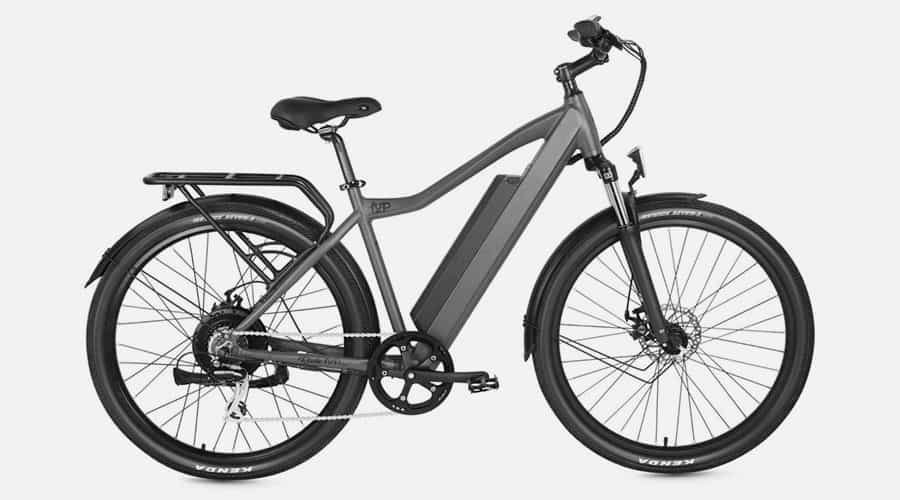
The lifespan of an electric hub motor can vary widely depending on several factors, including the quality of the motor, the type of e-bike it is installed on, and the usage patterns of the rider. In general, higher-quality hub motors are designed to be more durable and long-lasting than lower-quality ones, but even the best motors will eventually wear out or fail.
On average, a high-quality electric hub motor can be expected to last anywhere from 10,000 to 20,000 miles of use before requiring replacement or major repairs. However, this lifespan can be significantly shortened if the motor is subjected to harsh conditions or if it’s not properly maintained.
To help extend the lifespan of an electric hub motor, it’s important to avoid overloading it or using it on excessively steep hills. Regular maintenance, including proper cleaning and lubrication of the wheel and bearings, can help reduce wear and tear on the motor
Are Hub Motors Reliable?
Hub motors are generally considered to be very reliable, as they have a simple design and few moving parts. The motor is typically housed inside the hub of the wheel, which protects it from the elements and reduces deterioration. Additionally, hub motors do not require any additional components, such as a chain or derailleur, which can be prone to wear and require frequent maintenance.
However, like any mechanical component, hub motors can experience wear and tear over time, especially with heavy use. In some cases, the motor may fail due to damage or manufacturing defects. Regular maintenance and care can help extend the lifespan of a hub motor and prevent premature failure.
Overall, hub motors are considered to be a reliable and durable option for e-bikes, especially for casual riders who prioritize ease of use and minimal maintenance.
Are E-bike Mid-drive Motors Reliable?
Although Mid-drive motors are typically considered to be reliable, they may require more maintenance than hub motors due to their more complex design and reliance on additional components. Moreover, mid-drive motors may put more strain on the chain and other components, which can lead to faster wear and require more frequent maintenance and repairs.
However, mid-drive motors can also provide more responsive and intuitive assistance compared to hub motors, which can make them a better option for more experienced or performance-oriented riders.
Overall, mid-drive motors are a reliable option for e-bikes, but they may require more care and maintenance, especially for riders who frequently use their e-bikes in challenging terrain or for long distances.
Which E-bike Drive System is Best?
The best e-bike drive system depends on the rider’s needs and preferences, as each system has its unique advantages and disadvantages.
Hub motors are typically more affordable and easy to maintain, making them a good option for casual riders or those who prioritize ease of use. On the other hand, Mid-drive motors are more responsive and efficient, making them a good option for experienced riders or those who prioritize performance and speed.
Ultimately, the best e-bike drive system is one that meets the rider’s specific needs and preferences, whether that is performance, range, ease of use, or other factors. It is important to carefully consider all the options and choose a system that will provide a comfortable and reliable ride experience for the rider.
Hub- vs Mid-drive E-bike – Which is Right for Me?
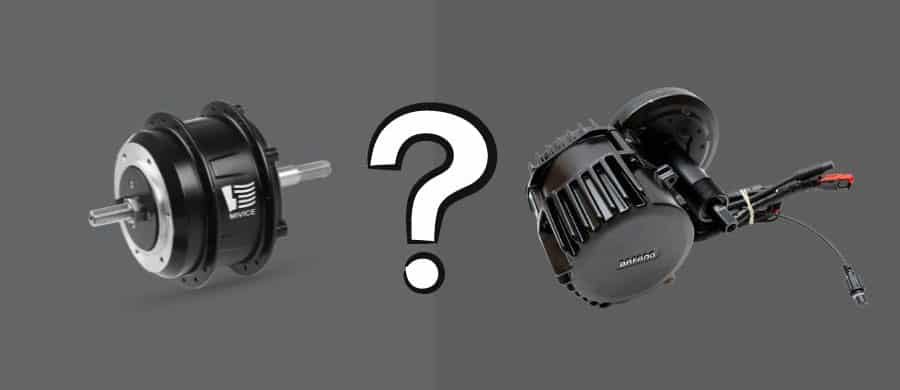
When it comes to choosing between a hub or mid-drive e-bike, there are a number of factors to consider that can help determine which is right for you. Here are a few key considerations:
Terrain
If you plan to ride in hilly or mountainous areas, a mid-drive motor may be a better choice, as it can provide higher torque and help you climb steep inclines easily. Hub motors are better suited to flatter terrain, as they offer less power but can still provide a smooth and reliable ride.
Riding style
If you prefer a more leisurely, relaxed ride, a hub motor may be a good choice, as it provides a smooth and quiet ride with minimal maintenance. If you are a more experienced or performance-oriented rider, a mid-drive motor may be better suited to your needs, as it offers more responsive assistance and greater control over the bike.
Budget
Hub motors are generally less expensive than mid-drive motors, making them a good option for riders on a budget. However, mid-drive motors may offer greater long-term value and performance, especially for riders who plan to use their e-bike frequently or for long distances.
Maintenance
Hub motors are generally easier to maintain, as they have fewer moving parts and do not require a derailleur or a chain for operation. On the contrary, mid-drive motors may require more frequent maintenance, especially for riders who frequently use their e-bike in challenging terrain.
Ultimately, the decision between a hub-drive or mid-drive e-bike will depend on your specific needs and preferences. It is important to carefully consider the options and test ride different models to determine which will provide the most comfortable and reliable ride experience for you.
FAQs
What is a hub-drive motor?
A hub-drive motor is an electric motor that is integrated into the wheel hub of an e-bike.
What is a mid-drive motor?
A mid-drive motor is an electric motor that is mounted on the bike’s bottom bracket and powers the chain.
Which motor is better for off-road riding?
Mid-drive motors are more effective for off-road riding because they offer better traction, control, increased hill-climbing abilities, and greater power output.
Which motor is more suitable for long-distance touring?
Mid-drive motors are preferred for long-distance touring since they offer higher torque, greater range, and more efficiency.
Which motor is easier to maintain?
Hub-drive motors are easier to maintain since they have fewer moving parts and are less complex.
Which motor is more affordable?
Hub-drive motors are generally less expensive than mid-drive motors.
